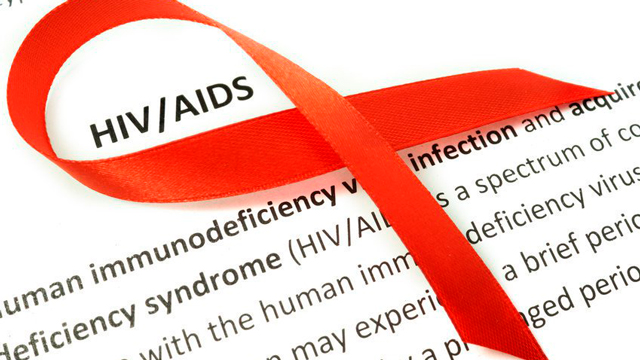The first known cases of acquired immunodeficiency syndrome (AIDS) in the United States were reported in 1981, and in 1983 human immunodeficiency virus (HIV) was established as its cause. HIV rapidly spread over the next three decades, reaching epidemic proportions and becoming a major global public health crisis. Worldwide, nearly 71 million people have been infected with HIV and 24 million people have died of AIDS-related illnesses since the start of the epidemic.
According to the World Health Organization, 36.9 million people were living with HIV at the end of 2014, including 2.6 million children younger than fifteen. The burden of the disease varies considerably between countries, with resource-limited countries being disproportionately affected. Sub-Saharan Africa remains the most severely affected region, accounting for nearly 70 percent of all people (and 88 percent of all children) living with HIV worldwide.
In the United States, 1.2 million people are living with HIV, with nearly one in eight adults unaware of their diagnosis. There are about 50,000 new HIV infections each year, and 25 percent of these new infections are among youth ages thirteen to twenty-four. Geographically, the highest rates of HIV infection, AIDS diagnoses, and AIDS-related deaths are observed in the South. The average lifetime risk of acquiring HIV is estimated as one in ninety-nine in the U.S., and one in 115 in Virginia.
Worldwide, more than 80 percent of HIV infections occur through heterosexual transmission, and 51 percent of all HIV-infected people in the world are women. In the U.S., however, heterosexual transmission is estimated to account for only 25 percent of new HIV infections. In addition, more men than women are infected with HIV in the U.S., reflecting the epidemic among gay, bisexual, and other men who have sex with men (MSM). MSM are nineteen times more likely than the general population to be HIV-infected, and MSM transmission of HIV accounted for 68 percent of all newly diagnosed HIV infections in the U.S. in 2013. Striking racial disparities related to HIV infection exist, with African Americans being the most severely affected. In 2013, African Americans accounted for 46 percent of all new infections, despite accounting for only 13 percent of the total U.S. population.
Major advances in research and pharmaceutical development over the past three decades have dramatically improved the prognosis for people living with HIV. HIV-infected individuals with access to modern treatment regimens should be able to suppress the virus for life and avoid most AIDS-related complications. In essence, in developed countries, HIV has been transformed from an invariably fatal disease into a chronic, manageable condition.
In the U.S., since reaching its peak in 1995, the adjusted HIV-related death rate has decreased by 87 percent. This decreased mortality rate has translated to a longer life span for people living with HIV/AIDS. In 1996 and 1997, the life expectancy at age twenty for an HIV-infected individual was nineteen years. In other words, an individual could expect to live only until age thirty-nine. In comparison, in 2011, life expectancy at age twenty for HIV-infected individuals had increased to fifty-three, meaning death occurred at an average age of seventy-three.
Early in the HIV epidemic, the antiviral drugs used to treat HIV were associated with significant side effects and relatively low potency. As a result, the virus rapidly developed resistance, and the disease inevitably progressed to death. As the number and effectiveness of drugs improved, a new standard of care (highly active antiretroviral therapy or HAART) emerged in the mid-nineties. HAART relies on a combination of three or more drugs, which target the virus at two or more different points along its life cycle. HAART does not cure HIV, but it can reduce the amount of virus in an infected individual’s body to extremely low levels, such that the virus can no longer be detected using a highly sensitive blood test referred to as a viral load assay. It is now recommend that all individuals with HIV start on HAART at the time of diagnosis, in order to maximize health and longevity.
In more recent years, pharmaceutical companies have worked collaboratively to combine complex HAART regimens requiring large numbers of pills into fixed-dose combinations. These co-formulations often allow HIV infection to be treated with a single pill taken once daily. As of January 2016, there are five fixed-dose single pill regimens approved by the Food and Drug Administration. Three of these are recommended as first-line therapy for newly diagnosed patients. These single-tablet regimens improve the ease and consistency of taking daily medication and contribute to long-term effectiveness. In addition, these newer drugs have fewer side effects and less potential for interactions with other non-HIV medications.
HAART also has had an impact on family planning. As more HIV-infected individuals live longer and healthier lives, pregnancy and parenthood has become a safer option. Careful planning with an HIV specialist can, in the majority of cases, protect the health of both parents and the baby. In HIV-serodiscordant couples, where one partner is HIV-positive and the other HIV-negative, ways to minimize the risk of transmission to the uninfected partner include treating the HIV-infected partner, pre-exposure prophylaxis (PrEP) for the uninfected partner, and the use of assisted reproduction. Treating the HIV-infected partner with HAART can decrease the risk of transmitting the virus to an uninfected partner by as much as 96 percent. Since 2012, PrEP has been available as a prevention strategy for uninfected individuals in an ongoing sexual relationship with an HIV-positive partner. PrEP requires the use of a daily medication, which is a fixed dose combination of two antiretroviral drugs. Studies have shown that PrEP reduces the risk of contracting HIV from sex by more than 90 percent.
An alternative to natural conception for HIV-positive or HIV-serodiscordant couples is assisted reproduction, which involves the use of technology to achieve conception. One of the more common methods of assisted reproduction is in vitro fertilization, though several options exist. Regardless of which form of assisted reproduction is used, a separate procedure called sperm washing can reduce the risk of transmitting the virus from an HIV-infected father to the mother or baby.
One of the greatest success stories since the beginning of the HIV epidemic has been in preventing mother-to-child transmission (MTCT) of HIV. Transmission from mother to child of HIV can occur during pregnancy, at birth, or during breastfeeding. In the U.S. and Europe, the risk of MTCT has been reduced to approximately 1 percent, as a result of comprehensive treatment strategies which include prescribing HAART for pregnant HIV-infected women, and providing antiretroviral prophylaxis to their infants for a brief period of time. Most pregnant women with undetectable or very low HIV viral loads are candidates for natural childbirth. Despite these successes in the developed world, MTCT still accounts for 90 percent of all HIV infections among children globally. In sub-Saharan Africa, 20 to 40 percent of pregnant women are HIV-infected, and one-third of their babies acquire HIV infection through MTCT.
Despite the occasional tantalizing news story to the contrary, a cure for HIV is not imminent. Instead, many experts consider vaccination to be the best hope for controlling the HIV epidemic. Unfortunately, despite decades of research, the development of a safe and effective vaccine has proven to be challenging. The most effective vaccine to date, tested in a clinical trial in Thailand from 2003 to 2006, produced only a modest 31 percent reduction in HIV infection among vaccine recipients. Still, the trial was a landmark study because it established the “proof of concept” for a vaccine-based prevention strategy. The National Institutes of Allergy and Infectious Diseases is tentatively scheduled to launch a large-scale clinical trial in November 2016 using a new vaccine. This is based on improvements made to the vaccine originally tested in Thailand seven years ago.
So what should you do to help fight HIV? Be proactive. Getting tested is easy, and treatment is available regardless of ability to pay. Although talking about HIV can be difficult, you should encourage your partner to be tested as well. Condoms remain the single most effective strategy to reduce the risk of HIV and other sexually transmitted diseases. If you are diagnosed with HIV, then talk to your doctor as soon as possible. A specialty center like the HIV/AIDS Center at VCU Health, which uses a multidisciplinary team approach, can provide exceptional clinical care that is non-judgmental, compassionate, and culturally sensitive with the goal of helping people living with HIV improve their health and social condition.


Co-authored by Suzanne Lavoie, MD, professor of pediatrics and internal medicine at VCU School of Medicine. Lavoie sees adult and pediatric patients with infectious diseases at VCU Health and Children’s Hospital of Richmond. In addition to her infectious diseases practice, she provides advice and care to families with internationally adopted children. She is the mother of four children, ages ten to fifteen, and lives in Henrico County.





